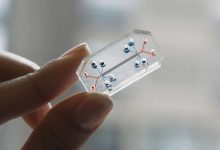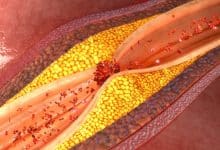
Scientists have discovered that insulin sensitivity and glucose homeostasis can be re-established by modulating electrically the carotid sinus nerve
Type 2 diabetes mellitus is a metabolic disorder that is a life-long disease in which cells cannot use blood sugar efficiently for energy and results in hyperglycemia (high blood glucose levels) due to the body. In this type of diabetes, the body becomes resistant to the normal effects of insulin and does not produce insulin from the pancreas. It is a severe medical condition that needs the use of anti-diabetic medication, or insulin frequently to control the blood sugar levels.
In a new research by Sílvia Vilares Conde, from CEDOC-NOVA Medical School, in collaboration with the pharmaceutical company, Galvani Bioelectronics discovered that insulin sensitivity and glucose homeostasis can be re-established in rats. This can be done by modulating electrically the carotid sinus nerve which is the connection between the carotid body with the brain.
Carotid body is a chemoreceptor located near the fork of the carotid artery. Carotid body act as a sensory body which senses changes in arterial blood oxygen and helps in for maintaining homeostasis during hypoxemia. This oxygen sensor Dysfunction can lead to the development of metabolic diseases because it regulates peripheral insulin sensitivity.
The study is published in Diabetologia, the journal of the European Association for the Study of Diabetes [EASD] done by Sílvia Vilares Conde and her group performed the experiment in diabetic rats and found that if bilateral resection of the carotid sinus nerve is done it can lead to association of brain with carotid body which in turn helps in restoring sensitivity of insulin as well as tolerance to glucose.
This surgical irreversible approach is very efficient but it also has many disadvantages. One of the major drawback is that carotid body has other physiological functions in the reaction on the condition like hypoxia or exercise adaptation. Hypoxia is the condition in which the amount of oxygen reaching the tissue is not adequate.
During their research, Silvia Conde’s team also explained that in animal models induced with type 2 diabetes have over activated carotid body. With this in mind, by lowering the activity of carotid body, better therapeutic strategies could be found.
The team got the opportunity to electrically modulate the carotid sinus nerve by collaborating with the Galvani Bioelectronics (former Glaxo Smith Kline Bioelectronics).
In fact, this work revealed that it is possible that in animals, glucose homeostasis can be maintained by implanting electrodes in the carotid sinus nerve and submitting it to electrical modulation. It didn’t show any noteworthy opposing effects. It also showed that electrical modulation can also be reversed.
Silvia Conde says that “this work opens the door to the development of a new therapy for type 2 diabetes that will provide a long-term management of the disease with negligible adverse effects and interference with daily activities”.
There were many research work done till the date to find the therapeutic strategy to control hyperglycemia for the long term but none was successful and it was being predicted that in future a huge increase in the occurrence of the disease will take place.
This new study is like a new to patients with metabolic diseases that it will bring new brings a new method for the controlling of type 2 diabetes.






